Loon Lake’s lifestyles of the rich and famous

[ad_1]
HIstoric former resort features a surviving hotel annex, several cottages (including one that housed multiple presidents) and a history of famous visitors
By Tom French
Loon Lake is along a road less taken. You won’t pass it on your way from here to there. Found three miles west of state Route 3, 20 miles north of Saranac Lake, along Route 26, the old Port Kent-Hopkinton Turnpike , it requires a dedicated trip. Its history as one of the most “socially prominent” resorts in the Adirondacks saw wealthy families such as the Vanderbilts, Whitneys, Rothschilds, Rockefellers, and Guggenheims regularly staying as guests. It features one of the earliest golf courses in the Adirondacks and African-American homesteaders with ties to Gerrit Smith of Timbuctoo and the abolitionist movement.
Every other year, Adirondack Architectural Heritage (AARCH) offers a tour of the community that includes a surviving hotel annex, several cottages (including one that housed multiple presidents) and a history of famous visitors such as Irving Berlin, George Gershwin, Theodore Dreiser, Sir Arthur Conan Doyle, Oscar Wilde, Red Skelton and others on the comedy circuit.
Settlements began in the area with the construction of the Port Kent-Hopkinton Turnpike in the early 1830s – a toll road that hugged the shores of the lake. Nearby Merrillsville was the first hamlet, founded around 1831 when a 24-year-old John Merrill built an inn as a stagecoach stop along the turnpike. He also established the first post office in the Franklin Township as hunting, logging, and mining interests grew.
RELATED: Historic bridges of the Ausable River
In 1848, Gerrit Smith, one of the wealthiest men in New York State, gave Willis Hodges, a free Black abolitionist from Virginia, two-hundred acres as part of his plan for Black men to own property so they could vote. Known as Blackville and located north of the lake, it survived only two years due to harsh weather, poor farming conditions, and lack of experience by the settlers. Hodges Bay on Loon Lake is named after Willis.
By the 1850s, the area caught the attention of Paul Smith, a hunting and fishing guide before becoming a hotelier. He stayed at the Merrill Inn when he first visited and operated at least two different lodging establishments at Loon Lake beginning in the early 1850s before moving to Lower St. Regis Lake by 1859.
A family’s legacy
Loon Lake’s turn as a summer resort really began 20 years later, when Ferdinand and Mary Chase purchased 10 acres after several years of exploring the area on hunting and fishing trips, and it is their history that shines today. They built a 31-room, three-story log cabin which opened in 1879.
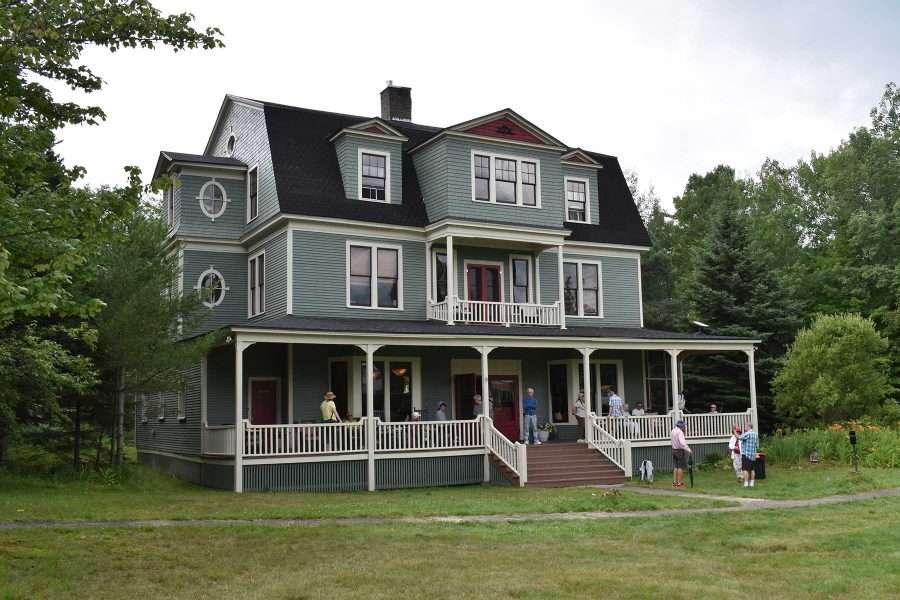
Within four years they expanded to 100 rooms with multiple dining and sitting areas and wide porches overlooking the lake. An observation tower offered views of the surrounding mountains and Vermont. The first annex, matching the 100 rooms of the main hotel, was built next door in 1893. A circular drive, that still exists, brought guests to the front door, and a grand staircase led down to a boathouse.
The Chases continued to expand their holdings for the next five decades until it included most of the fifty-plus cottages on the lake – without kitchens, as stipulated by Mary Chase, so everyone had to eat in the dining rooms. A city-like infrastructure supported the enterprise with a water and sewer system, barns, a dairy, gardens, laundries, and housing for a staff of close to 500. Local guides provided outdoor experiences and guests could indulge themselves with bowling, billiards, and the nine-hole Scottish -style golf course which opened in 1895 and expanded to eighteen holes in 1922.
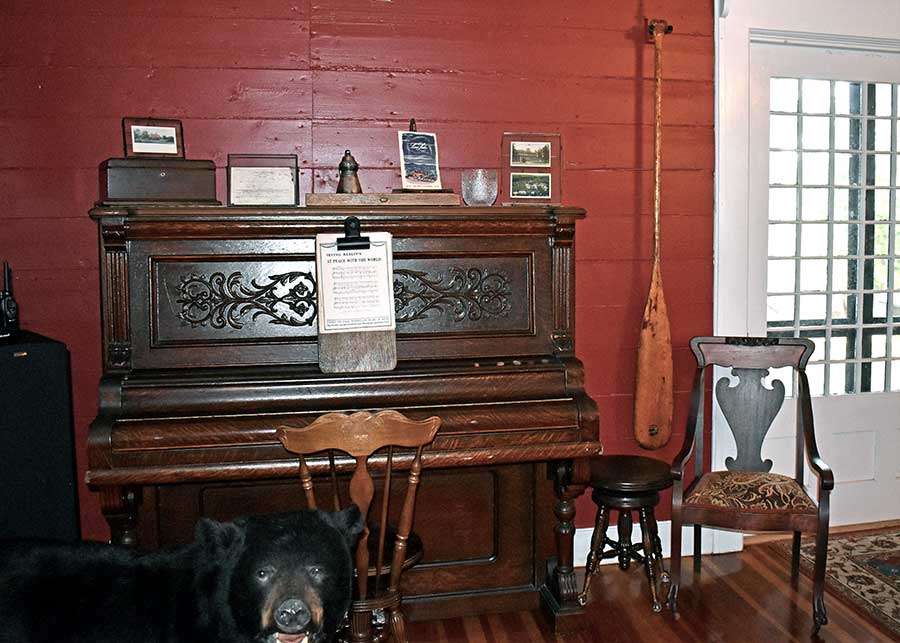
Mary Chase was intimately involved in the operation of the resort, hired every person herself, and invited every guest. She perused the social columns, and if she disapproved of what she read, you were not invited back.
After Mary Chase died in 1933, the hotel limped along until it was purchased in 1947 by Andron Resorts, a hotel company from Florida that catered to Jewish clientele. A nearby hunting lodge was converted into a synagogue that is still in operation today.
Two different railroads snaked through the woods to provide access from Montreal, Plattsburgh, Lake Placid, Utica and points beyond, and ne’er did the tracks meet. Each line had its own station parallel to the other.
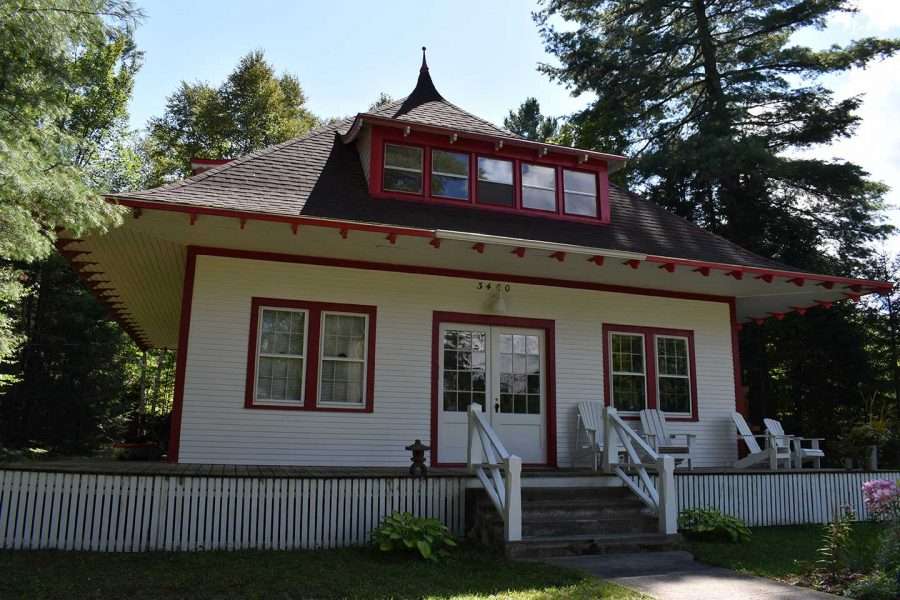
Caddie House
The first building on the AARCH tour is the Caddie House. Built in 1895, it may have been designed by Stanford White. Although White designed the Boston Public Library and triumphal arch in Washington Square in New York City, he may be more famous for his part in a love triangle with actress Evelyn Nesbit and railroad heir Henry Thaw who murdered White on the rooftop of Madison Square Garden in 1906. Thaw’s prosecution was dubbed the “Trial of the Century” at the time.
The architecture of East Asia, which influenced many Adirondack Great Camps, is reflected in the Caddie House’s pagoda roof and deep-boxed eaves over a wide, wrap-around porch. The open interior is dominated by two, side-by-side staircases in the rear. After WWII, it was purchased by PGA Pro Harry “Zeke” Pimstead and became the post office as well as a pro shop. Pimstead died in 1974 and the building was purchased by the current owners, Karl Beckwith Smith and Hal Truesdale, in 1978. The golf course closed in 2003.
Irish House
The Loon Lake House burned in 1956 along with Annex #1 – a fire so large legend says flames could be seen from Montreal. A smaller, second annex, built around 1905, still stands next door to the Caddie House. Known as the Irish House , the three-story structure with nine bedrooms and 7½ baths has been extensively restored in the last few years by Patty Cogswell, a lifelong resident of the community. Its lawn was once the putting green for the golf course, and a ball washer still sports the front yard.
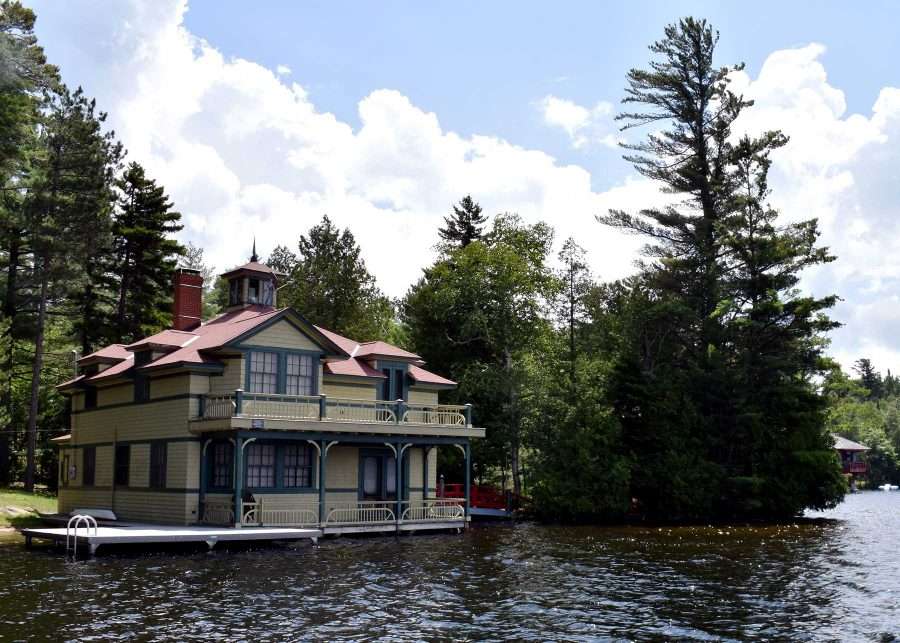
Happy Days and Balsam
We pass the “Happy Days Cottage,” originally built by the Guggenheims and also perhaps designed by Stanford White. Theodore Dreiser is said to have written “An American Tragedy” while staying at the cottage. Further down along the shore, we tour the Balsam Cottage, where Irving Berlin is rumored to have stayed and played – the piano on which he tickled the ivories sits in a corner.
The President’s House
Arthur Fitzwilliam Tate painted here in the 19th century; EL Doctorow fictionalized it in the 20th. During the summer of 1892, First Lady Caroline Harrison convalesced in the Sunset Cottage, now known as The President’s House. She spent the summer, with President Harrison visiting from time to time, and returned to Washington in late September where she succumbed to her illness a month later.
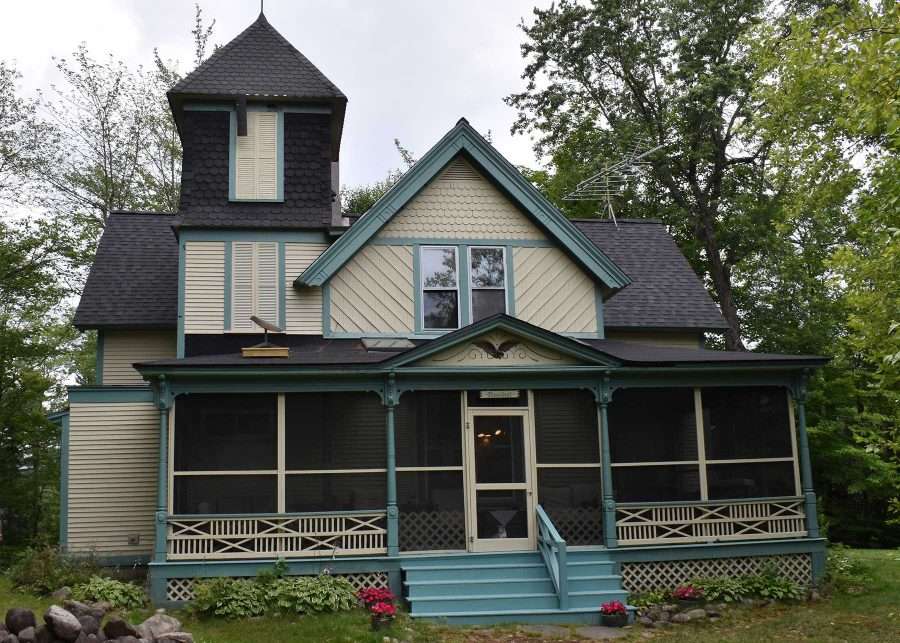
President Grover Cleveland vacationed at the cottage three years later and William McKinley summered in the house from 1897 to 1901. It is believed Theodore Roosevelt visited the lake as a teenager with his mother during the summer of 1877 when he may have written “Summer Birds of the Adirondacks.”
Don’t miss a thing
Sign up for our weekly “Adk News Briefing” newsletter, that highlights the week’s top stories on our two websites: adirondackexplorer.org and adirondackalmanack.com.
Click here to see our full slate of weekly and daily newsletters
(function(d, s, id) { var js, fjs = d.getElementsByTagName(s)[0]; if (d.getElementById(id)) return; js = d.createElement(s); js.id = id; js.src = “https://connect.facebook.net/en_US/sdk.js#xfbml=1&appId=249643311490&version=v2.3′; fjs.parentNode.insertBefore(js, fjs); }(document, ‘script’, ‘facebook-jssdk’));
[ad_2]
Source link





